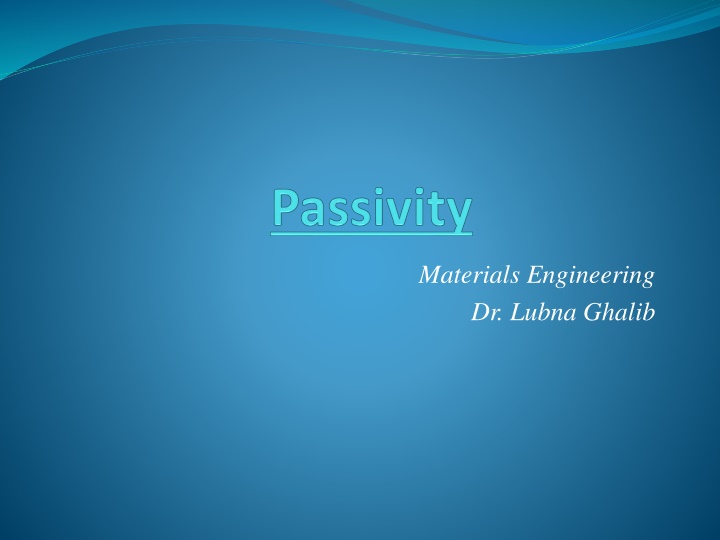
Passivity in Metals: Corrosion and Protection
Learn about passivity in metals and how it affects corrosion rates. Explore the concepts of active, passive, and transpassive regions, as well as the role of alloying metals to enhance passivity and protect against corrosion.
Download Presentation

Please find below an Image/Link to download the presentation.
The content on the website is provided AS IS for your information and personal use only. It may not be sold, licensed, or shared on other websites without obtaining consent from the author. If you encounter any issues during the download, it is possible that the publisher has removed the file from their server.
You are allowed to download the files provided on this website for personal or commercial use, subject to the condition that they are used lawfully. All files are the property of their respective owners.
The content on the website is provided AS IS for your information and personal use only. It may not be sold, licensed, or shared on other websites without obtaining consent from the author.
E N D
Presentation Transcript
Materials Engineering Dr. Lubna Ghalib
Passivity: .Passivity means the lack of activity under conditions where a metal would be expected to react readily. There are certain metals which are passive to certain corroding agents. For example; iron is passive to conc. HNO3. Aluminum has no action with conc. HNO3 in absence of chlorides etc. Metals which are susceptible to corrosion are made passive by alloying with one or more of metals which are passive or resist corrosion. For example; Iron is rendered passive by alloying it with any of the transition metals such as chromium, nickel and molybdenum.
Passivity: .The quantity of passive metal to be added depends upon the environments. For example; iron-chromium alloy, when the quantity of chrome added is from 12 to 20%, the alloy is passive to neutral salt solution but no concentration of chromium in iron makes the alloy passive to hydrochloric acid. Passivity is definedas the reduction in chemical or electrochemical activity of a metal due to the reaction of metal with its environment so as to form a protective film on the metal surface.
Passivity: . Corrosion rate of the a metal as a Function of solution oxidizing power (electrode potential) active metal (non-passive)
Passivity: . Corrosion characteristics of an active-passive metal as function of solution oxidizing power
Passivity: .There are three regions, Active, Passive & Transpassive Active region: the behavior of a normal metal. Passive region: If more oxidizing agent is added the corrosion rates suddenly decrease, this mean that this region begin. Transpassive region: with further increase in oxidizing agents the corrosion rate again increase with increasing oxidizer power.





















